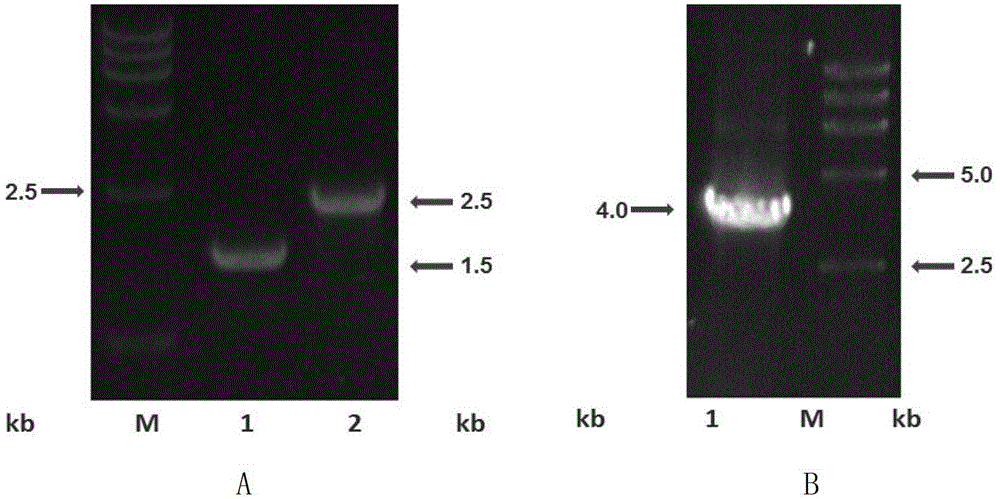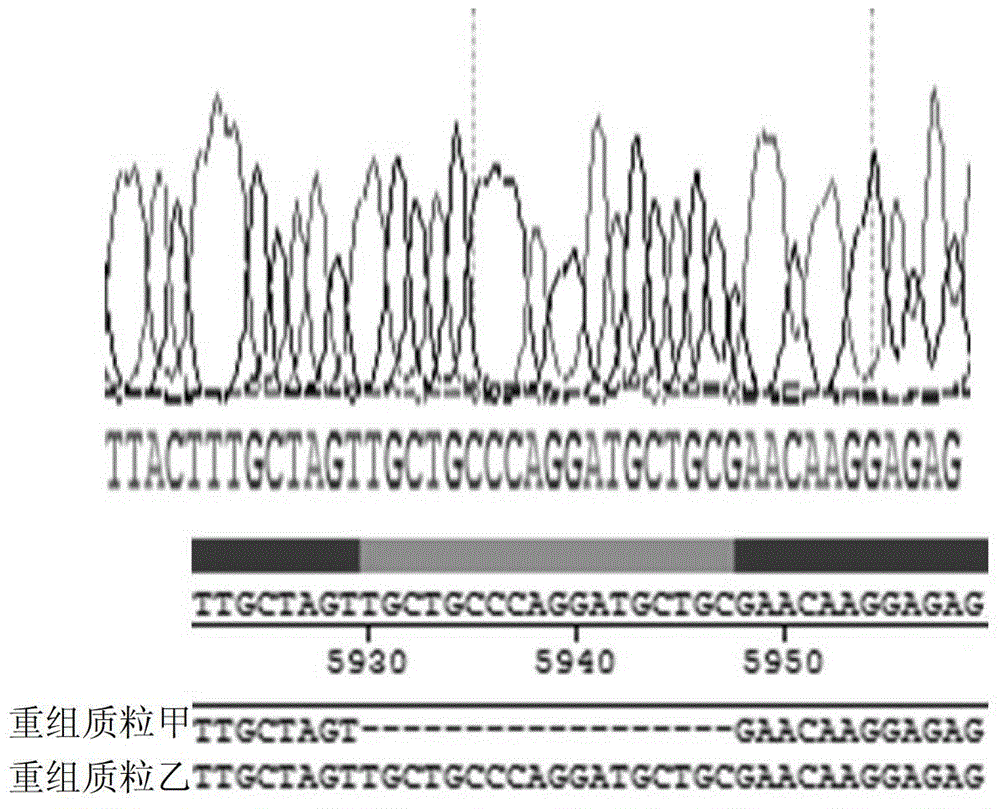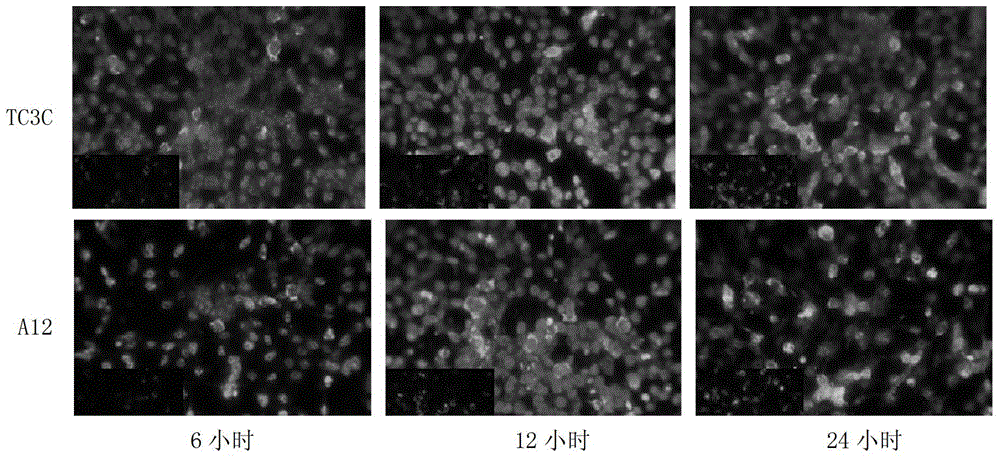Visible recombinant virus of human enterovirus 71 and application thereof
A technology of enterovirus and recombinant virus, which is applied in application, virus/bacteriophage, recombinant DNA technology, etc., can solve the problems of inability to image viruses in real time, and achieve good application prospects, stable genes, and simple operation
- Summary
- Abstract
- Description
- Claims
- Application Information
AI Technical Summary
Problems solved by technology
Method used
Image
Examples
Embodiment 1
[0041] Embodiment 1, the construction of recombinant EV71 virus
[0042] The AH / 08 / 06 strain is a domestic isolate of enterovirus type 71, and the full-length cDNA corresponding to its genomic RNA is shown in sequence 3 of the sequence table (the 5387th to 5935th nucleotides from the 5' end are 3C pro Gene, 3C shown in sequence 5 of the coding sequence listing pro protein).
[0043] 1. Enterovirus 71 3C pro Construction and Identification of Recombinant Plasmids
[0044] 1. Construct the plasmid of full-length infectious cDNA clone A12 of EV71 AH / 08 / 06 strain
[0045] Synthesize the double-stranded DNA molecule shown in sequence 3 of the sequence table, and insert it between the SnaBI and MluI restriction sites of the pBR322 plasmid to obtain the recombinant plasmid A (also known as the full-length infectious cDNA clone carrying the EV71 AH / 08 / 06 strain A12 plasmid, also known as enterovirus 71 recombinant plasmid).
[0046] 2. Design and synthesize the following primers ...
Embodiment 2
[0076] Embodiment 2, indirect immunofluorescence analysis
[0077] 1. Preparation of antigen sheets
[0078] Use 8-well sterilized cell culture slides to culture RD cells. After the cells are 90% confluent, inoculate enterovirus 71, absorb at 37°C for 1 hour, discard the supernatant, and add DMEM maintenance medium containing 2% FBS , placed at 37°C 5% CO 2 incubator for cultivation. Samples were taken 6, 12, and 24 hours after virus inoculation, the cells were washed three times with PBS buffer, and pre-cooled acetone (500 μl / well) was added and fixed overnight at -20°C. After taking out the slides, dry them at room temperature and store them at -20°C.
[0079] 2. Indirect immunofluorescence analysis
[0080] Take out the antigen sheet prepared in step 1, equilibrate to room temperature, add 100 μl 1:200 times diluted monoclonal antibody specific to the VP1 protein of enterovirus 71, and incubate for 1 hour in a humid box at 37°C, and remove the antigen The slices were s...
Embodiment 3
[0082] Embodiment 3, western blot analysis
[0083] Inoculate RD cells into a 48-well plate. After the cells grow to a monolayer, enterovirus 71 is inoculated at 37°C with 5% CO 2 Incubate in the incubator for 6 hours, then wash the cells three times with PBS buffer, add 0.25% trypsin to digest the cells until round and shrink, discard the trypsin, resuspend the cells with PBS buffer, add protein loading buffer, and boil in water Samples were loaded after 10 minutes, followed by SDS-PAGE (5% stacking gel, 80V, 12% separating gel, 120V, total electrophoresis time 1h) and immunoblotting. In western blot, use 1:1000 dilution of specific monoclonal antibody against enterovirus 71 VP1 protein or 1:100 dilution of anti-3C proMonoclonal antibody, using alkaline phosphatase-labeled goat anti-mouse secondary antibody diluted 1:1000 times. A blank control (Neg) not inoculated with enterovirus 71 was set.
[0084] see photos Figure 4 , where Figure A is the use of 3C against enterov...
PUM
| Property | Measurement | Unit |
|---|---|---|
| Molecular weight | aaaaa | aaaaa |
| Molecular weight | aaaaa | aaaaa |
Abstract
Description
Claims
Application Information
 Login to View More
Login to View More - R&D
- Intellectual Property
- Life Sciences
- Materials
- Tech Scout
- Unparalleled Data Quality
- Higher Quality Content
- 60% Fewer Hallucinations
Browse by: Latest US Patents, China's latest patents, Technical Efficacy Thesaurus, Application Domain, Technology Topic, Popular Technical Reports.
© 2025 PatSnap. All rights reserved.Legal|Privacy policy|Modern Slavery Act Transparency Statement|Sitemap|About US| Contact US: help@patsnap.com



